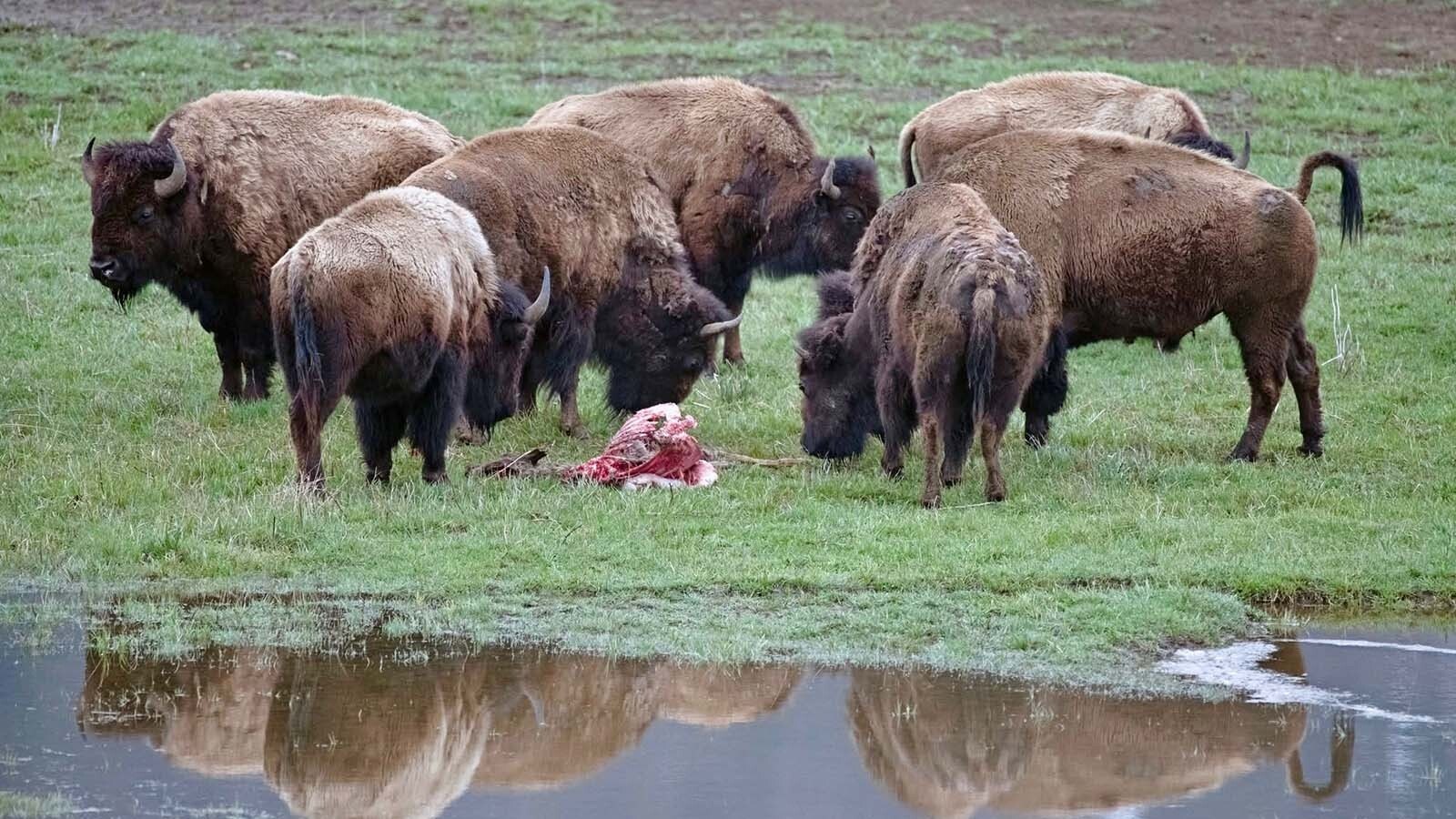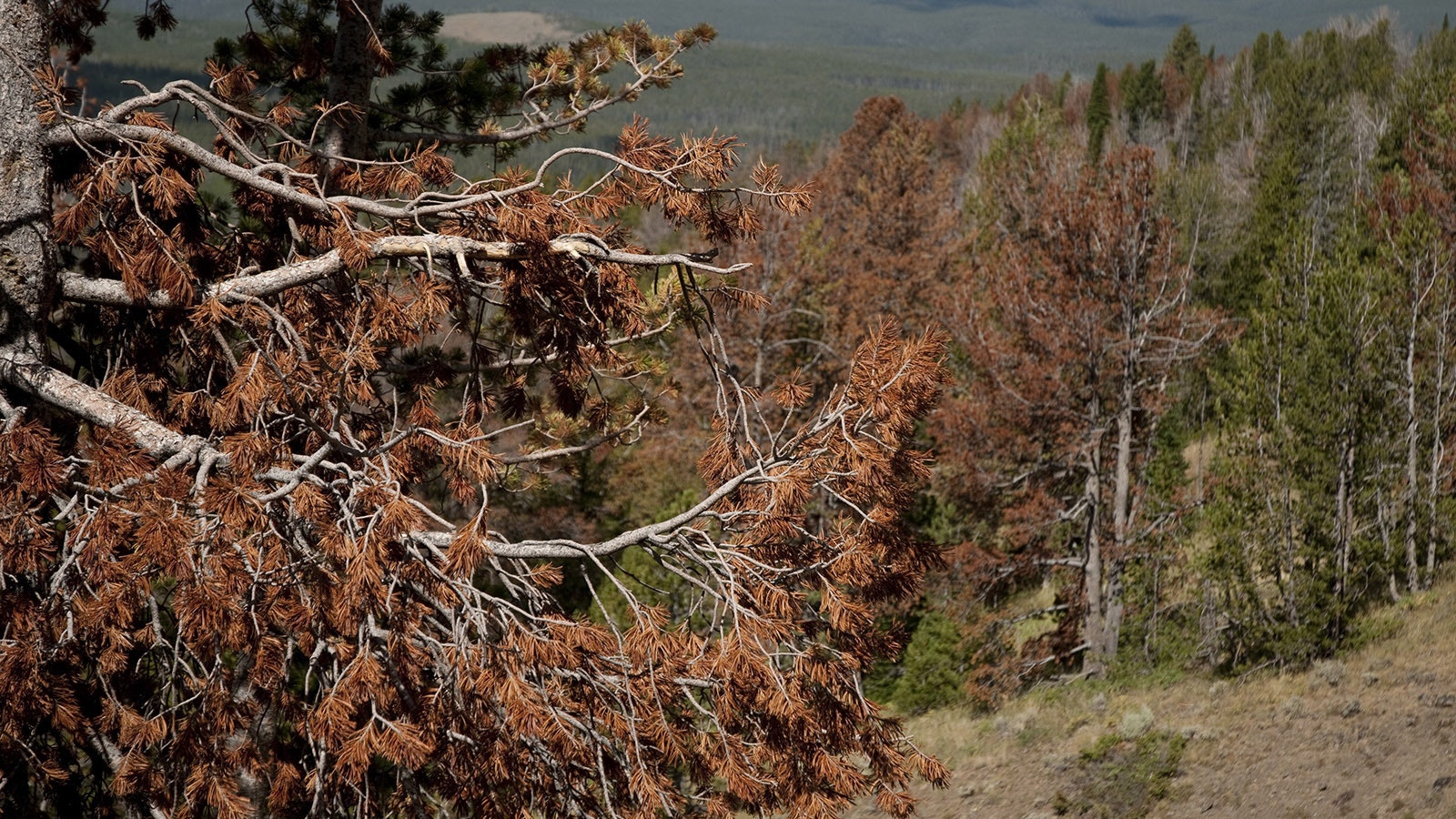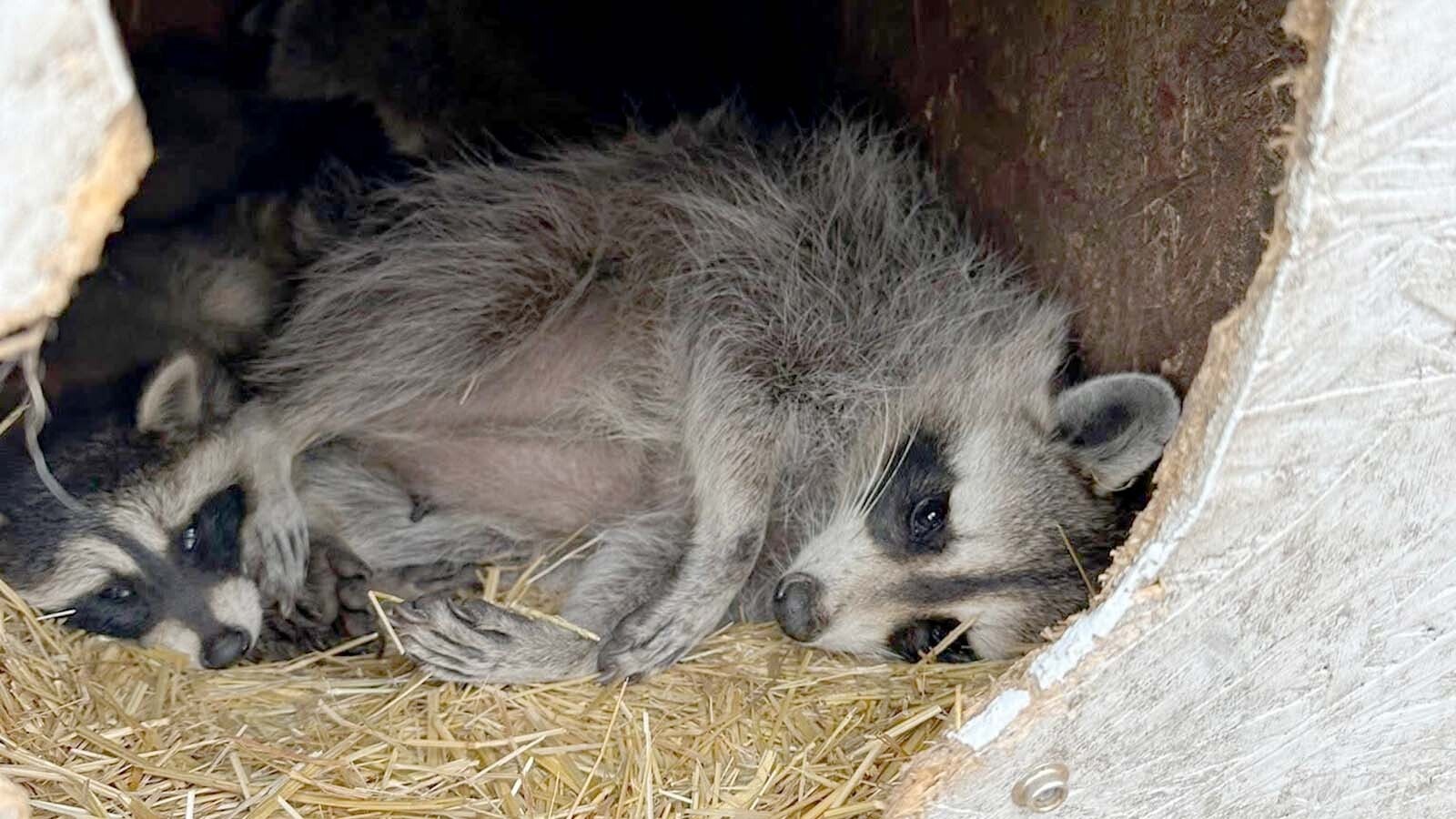Photographer Richard Spratley was enjoying an afternoon in Yellowstone National Park’s Lamar Valley when he noticed a herd of bison wandering through the area.
Their demeanor changed completely when they noticed a nearby elk carcass.
“That carcass had been there for a few days, fed on by numerous different things,” he told Cowboy State Daily about the 2023 interaction. “The bison meandered by, going in a specific direction, like they were headed somewhere.
“That carcass stopped them in their tracks, and they came over out of curiosity at first.”
Once the bison arrived at the carcass, they started circling it with their tails erect. The bison continued circling and inspecting the elk carcass for more than 20 minutes, and the longer they circled, the more their attitude changed.
“One bison actually jumped in the river and splashed around a little bit,” he said. “It was very interesting, I don't know how else to describe it, but they just seemed to be paying homage to this fallen critter.
“They seemed to be in mourning for a fellow animal.”

Behavioral Ecology
While there are dozens of scientific studies on the ecological and conservation impacts of bison, their behavior is a less-unexplored realm.
Behavioral ecology is a niche subject already, and bison aren’t the most appealing subjects of study.
“I would say we understand the broad outlines, but many people haven't studied bison in terms of just watching their behavior day after day,” said ecologist, author and bison advocate George Wuerthner. “It’s nothing like what we think we know about people, and we still have a lot to learn about human behavior.”
Studies have shown that bison have distinct behaviors when it comes to movement throughout their habitat.
Wuerthner cited a paper examining an intriguing pattern of movement observed in bison herds in Theodore Roosevelt National Park in North Dakota.
“They might move 5 miles overnight for no apparent reason,” he said. “It wasn't because there was no grass left to graze. They just moved. Cattle don’t randomly move like that, so it’s a singularly different behavioral trait.”
There is no scientific evidence suggesting bison understand the concept of death or have specific mourning rituals. However, similar behaviors have been thoroughly researched in other species.
Elephants have been extensively documented showing an interest in the bodies and bones of dead elephants, even if they weren’t related to the deceased.
They have been seen touching, “crying” and using distinct vocalizations when confronted with death, even trying to lift bodies off the ground.
Dolphins, whales, chimpanzees and dogs also have been studied after exhibiting distinct behavioral changes and reactions when confronted by death. These aren’t “emotions,” as Wuerthner noted, but could be seen as such.
“You want to be careful attributing human emotion to what we see in other animals,” he said. “We can certainly visualize and describe behavior, but people use human emotional attributes so that they can relate to what's going on with those animals.”
The list of animals known to show these behaviors is short, and bison typically aren’t on them.
Nevertheless, those who’ve spent time observing bison in Wyoming have stories of strange experiences when they choose to confront death.
A Mournful Atmosphere
Spratley observed another incident of “bison mourning” near Blacktail Pond in the northern section of the park in June 2020.
The pond is a well-known “bison death trap” where the large animals frequently fall through the ice and drown in the pond during the winter and spring.
Spratley and several other photographers were observing the carcass of a bison killed by wolves. After the wolves and a grizzly had been on the carcass, the nearby bison herd returned.
“The herd was moving west to east, but when they got close to the carcass, they gathered around it in a U-shape,” he said. “Then they circled around it, one by one, smelling the carcass and looking at each other. They were just sort of somber.”
For over an hour, the bison maintained a constant vigil around the carcass. When some bison would stop circling and wander back to the main herd, others came to take their place.
Spratley said the bison were behaving in a unique way. With the sniffing, bowing heads, erect tails and deliberate movement around the dead bison, it seemed to him that they were showing signs of recognition.
“I don't know how to describe it, and I could be wrong, but it almost seemed as if they knew who it was by just the way they were acting,” he said. “They were paying their respects and moving on.”
What struck Spratley the most was a small group of bison that stayed close to the carcass but didn’t exhibit the same behavior as the rest of the herd. They weren’t grazing, circling or sniffing. They just stood in silence and refused to leave.
“There were two bison that stayed right where they were, even after the herd was long gone,” he said. “They didn’t want to leave, and it was over an hour before they finally did. The last bull remained for a few minutes longer. He walked all around the carcass, smelling with an erect tail.”
Spratley and the other photographers watched the scene unfold.
“Nobody said a word,” he said. “It was a hushed atmosphere that I had never felt before in the wild. It was very moving to witness.”
Cells And Ecosystems
If bison do have an observable ritual associated with death, it would take a lot of research and firsthand observation to confirm it.
Bison haven’t attracted the same attention as elephants, chimpanzees and other animals deemed to be “more intelligent,” therefore meriting more studies on their behavioral complexity. But even cattle have demonstrated above-average complexity when it comes to “emotional” displays.
Wuerthner believes there’s a lot to learn about bison behavior. He’s had firsthand experiences with bison that would indicate there’s more going on in their heads than many believe.
“This winter, I watched a tribal hunter kill a bison,” he said. “The herd ran away initially, then slowly came back to within 10 feet of the dead bison and stood around it, wondering what the hell was wrong or maybe mourning.
“A dominant bull came back, and if you know how to read bison (body) language, this bison bull was very agitated. You might say it was threatening the hunter over the dead bison, and it was killed the next day because it was deemed an aggressive animal.”
The problem with in-depth behavioral ecology studies is that they require a lot of firsthand observation — sitting, watching and recording everything an animal does and analyzing whatever patterns turn up. That kind of research just isn’t funded anymore, said Wuerthner.
“Behavioral ecology studies require spending a lot of time with the animals,” he said. “Unfortunately, that’s not the favored way of doing wildlife research anymore. It’s a lot more about computer modelling, cellsand genetics rather than the whole animal.”
Nevertheless, Wuerthner wouldn’t be surprised if bison were found to be more complex than previously and currently understood. He’s seen a wide variety of complex behaviors that show how adept bison have adapted to their world.
“I watched bison swimming a flooded river in spring when their calves weren't very big,” he said. “The calves were getting swept downstream by the flood, and the cows reacted by going downstream of their calves to keep them from floating away, and then another would get upstream to break the current.
“Then, they would help lead these bison calves across the river. Call it what you want, but that seems like a unique maternal instinct they're working.”
Emotional Response
Bison might not have emotions in the same way humans understand them, but several people who work and visit the Greater Yellowstone Ecosystem have seen enough to convince them that they’re more intelligent and complex than many believe. Science might be able to explain those behaviors, but not the emotional responses to them.
When Spratley described the “bison funerals” he watched in Yellowstone, he kept referencing the emotions he felt while watching. He’s confident that anyone else who’s seen similar displays of bison behavior has similar feelings.
“I couldn’t help but be saddened by their tenderness and bond,” he said. “You feel the atmosphere the bison created during these incidents. It was certainly mournful, but also magical.”
Andrew Rossi can be reached at arossi@cowboystatedaily.com.





